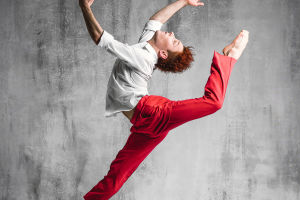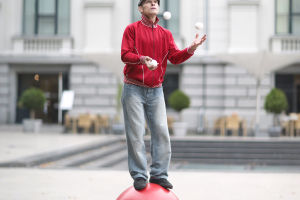In a world full of chaos and visual noise, minimalist photography offers a refreshing escape.
With its focus on simplicity and precision, minimalist photography removes the distractions that often clutter an image, allowing the viewer to connect with the subject on a deeper, more emotional level.
The beauty of this style lies in its ability to express complex emotions, thoughts, and philosophies through the most basic elements of composition—shapes, lines, space, and color. If you're new to minimalist photography or looking to refine your skills, this article will explore how you can convey profound meaning through simplicity and the power of "less is more."
What is Minimalist Photography?
At its core, minimalist photography is about stripping away all unnecessary elements from an image, focusing only on the essentials. This often means using a limited color palette, emphasizing negative space, and simplifying the composition to its bare minimum.
The goal is to create a photograph that feels open and uncluttered, while still evoking emotion, contemplation, or even a sense of tranquility.
Minimalism in photography isn't just about taking fewer objects or removing detail. It's about highlighting the subject in a way that creates a story through simplicity. It's about finding beauty in the quiet moments, the empty spaces, and the absence of unnecessary distractions. A well-composed minimalist photo is almost meditative—its power lies in the stillness and quietude that it captures.
The Power of Negative Space
One of the most important aspects of minimalist photography is the use of negative space, which refers to the empty areas surrounding the main subject. Negative space is often overlooked, but when used effectively, it can enhance the focus on the subject and add depth, balance, and emphasis to the composition.
The vast empty space around a single object can make that object feel more significant, more meaningful.
Think of a lone tree standing in the middle of an open field, with the sky stretching endlessly above. The vast expanse of space not only draws attention to the tree but also evokes a sense of isolation, peace, or even vulnerability, depending on the viewer's perspective. The emptiness in the frame invites the viewer to pause and reflect, adding an emotional layer that wouldn't be present in a busier scene.
Color and Tone in Minimalist Photography
In minimalist photography, color plays a critical role in conveying mood and meaning. Often, minimalist images feature a limited or subdued color palette. Soft tones, pastel hues, and monochromatic schemes are common choices, as they reinforce the simplicity of the composition and create a calm, serene atmosphere.
However, the strategic use of a single bold color against a neutral background can have a powerful effect, as it creates contrast and draws attention to the subject. For instance, a solitary red balloon against a gray sky can evoke a sense of whimsy, loneliness, or nostalgia—emotions that are heightened by the simplicity of the composition. In minimalist photography, every color choice is deliberate and serves to communicate a specific feeling or message.
While color is important, sometimes the absence of color can be just as powerful. Black and white minimalist photography, for example, emphasizes texture, form, and contrast, creating a timeless and classic feel. By removing the distraction of color, the viewer is forced to focus on the subject's structure and the play of light and shadow.
Composition: The Art of Simplicity
Minimalist photography relies heavily on the art of composition. The way a subject is placed within the frame, the lines that guide the viewer's eye, and the balance of the image are all essential elements in creating a successful minimalist photo. While the composition may seem simple, achieving the right balance requires skill and intention.
The rule of thirds is a common compositional tool used in minimalist photography. By placing the subject off-center and allowing for plenty of empty space, the photographer can create a dynamic, yet peaceful, image. Leading lines, whether natural (such as roads or rivers) or man-made (such as fences or walls), can also direct the viewer's eye and enhance the flow of the image.
These subtle techniques are often what make minimalist photography feel balanced and harmonious.
Ultimately, the goal is to use composition to highlight the subject and draw attention to its significance within the larger context of the image. The space around the subject is just as important as the subject itself, and the simplicity of the composition is what gives minimalist photography its emotional impact.
Emotions and Philosophy Through Minimalism
What makes minimalist photography so powerful is its ability to convey deep emotions and philosophical ideas using only a few elements. The simplicity of the composition allows the viewer to engage with the image on a more personal level.
Without the distractions of excessive detail, the viewer is encouraged to interpret the photograph in their own way, filling in the gaps with their emotions and thoughts.
For example, an image of a single chair in a barren room can evoke feelings of loneliness, solitude, or contemplation. The absence of human presence allows the viewer to project their own experiences or emotions onto the image, creating a connection between the subject and the observer. Similarly, a solitary figure walking along a deserted beach might symbolize a journey, introspection, or a sense of peace.
Minimalism in photography often reflects the philosophy of "less is more"—the idea that reducing elements to their most essential form can create something more meaningful and impactful. By focusing on the simplest aspects of the world around us, minimalist photographers are able to capture moments that resonate deeply with the viewer, provoking thought and reflection.
Tips for Capturing Minimalist Photos
If you're interested in exploring minimalist photography, here are a few tips to get started:
1. Focus on one subject: Minimalism is about simplicity, so try to focus on just one subject. Whether it's a person, an object, or a scene, keep the composition clean and uncluttered.
2. Use negative space: Don't be afraid of empty space. It helps create balance and makes the subject stand out more.
3. Limit your color palette: Use a limited range of colors to create a calm or cohesive atmosphere. Experiment with black-and-white photography for a timeless look.
4. Pay attention to light: Light and shadows are key in minimalist photography. The way light interacts with the subject can reveal texture, form, and depth.
5. Keep it simple: Avoid cluttering the frame with unnecessary elements. Simplicity is the essence of minimalist photography.
Conclusion: The Beauty of Less
Minimalist photography proves that sometimes less truly is more. By reducing the elements in an image to their most essential form, photographers can create compositions that are not only visually stunning but also emotionally powerful.
Through the careful use of space, color, and composition, minimalist photography allows us to find beauty in the simplest of things—inviting the viewer to slow down, reflect, and connect on a deeper level.
Have you ever tried minimalist photography? What do you think makes simplicity so powerful in an image? Share your thoughts and experiences in the comments below! Whether you're a beginner or a seasoned photographer, minimalism is a wonderful way to explore the emotional side of photography.


